PAN IS SIMPLY ONE, OF THE MANY NAMES OF SATAN AND, AS THEY SAY, THE DEVIL IS IN THE DETAILS!
Update added at the end.
So, to help you get a clearer picture, here are some more details for you to consider.
Please do your own research on the subject. Ask God to lead you, he knows best.
PAN — GREEK GOAT GOD OF THE FOREST AND OF CHAOS
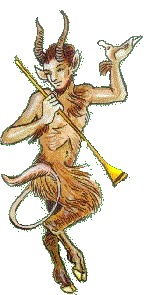 |
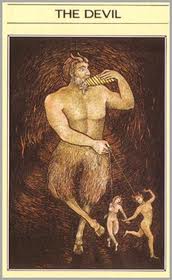 |
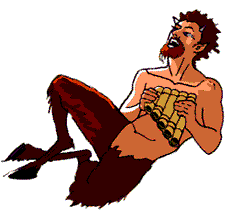 |
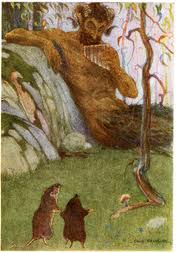 |
Pan, a Greek goat pagan nature god of the woods, a sylvan, and satyr or faun played the pan pipes or flute. Pan – as a prefix means “all”. The ancient scholars of Alexandria believed that Pan personified the Natural Cosmos, and the word Pantheism is derived from this idea, that all Nature is God and that God is All Nature: not merely a manifestation of the material world but the Animus Mundi, the spirit of the natural world. A panacea is a cure for all diseases. Pangea is the original one continent from which all our continents drifted. Pan seems to personify the concept of wisdom through oneness with Nature and so he was called the “Pangenitor’ the all-begetter. Pan is where we derive the words panic and pandemonium. Pan had a very dark nature, as the Hunter and Pursuer who was prone to violence and madness at times, he was called ‘Panphage’ the all-devourer. The word is also a term used on movie sets to describe the lateral movement of the camera when filming. Flutes or pan pipes as windpipes are woodwinds and also wind instruments. Pan is shown on the cover of the classic book The Wind in the Willows. As a fish-tailed sea-goat Aegipan is associated with Capricorn and also Enki or Oannes. As the horned goat god or satyr, he is the manifestation of Lucifer/Satan. The song Stairway to Heaven features a recorder that mimics a soft pan flute at the beginning of the song almost whispering like the whispering wind that’s referenced in the song. The songs Stairway to Heaven, Hotel California and The Beatles’ Sgt. Pepper all contain thinly veiled references to Lucifer, the Light-bearer. The album Sgt. Peppers even has the song Lucy (Lucifer) in the Sky with Diamonds. Lucifer according to the dictionary is actually female and is Venus.
 |

|
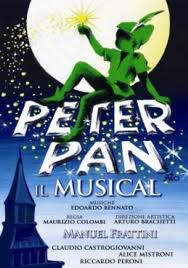 |
Disney made Pan into a cartoon character and major motion picture star with the release of their animated movie Peter Pan which looked like the mischievous playful sylvan forest god of Greek mythology. He dressed in green, had pointed ears, and possessed magical powers of a fairy such as being able to fly and he played on his pan pipes or flute, and just wanted to have fun all the time and never grow up. To help him he also had Wendy (windy), a tinker bell and a dragon or crocodile. He defeated his nemesis Captain Hook — by the crocodile eating him in the moon. He urged the viewer to go to Neverland by following a star, the second star on the right, which very well may be an allusion to Sirius. “The second star to the right shines in the night for you to tell you that the dreams you plan really can come true. The second star to the right shines with a light so rare and if it’s Never Land you need its light will lead you there.” Pan played the flute or the pan pipes. Not only did the fairy tales have a piper named Peter, but in nursery rhymes, there was Peter Piper who picked a peck of pickled peppers. Peppers are of the Piper genus. The words are etymologically related.
In Walt Disney’s Peter Pan, Wendy’s mother is named Mary, an aspect of Isis. The nurse mother for Wendy’s family is Nana (moon goddess) a dog probably symbolic of Sirius, the binary or trinary dog star. Peter Pan insists the second star on the right (and then straight on til morning) will take you to Neverland. They fly past the moon, to a bell tower with an orange clock (time is 8:15, Sirius usually rises in August) representative of our sun which causes time and is a stargate. So they pass through the stargate of our Sun and then they go past a bridge (gateway, Stargate, pipe) along the Milky Way river to the second star on the right which is smaller. This may very well be the dwarf companion of Sirius in the Pleiades constellation. This is the meaning of Snow White (Sirius) and the seven dwarves which are the seven sisters of the Pleiades. Captain Cook, while fighting Peter Pan, says he is no mere mortal but a “flying devil“. Peter Pan is from Sirius, the Dog Star, but he sails souls into the moon to reincarnate them on Earth. Peter is from Sirius but as the pagan nature god and mountain king lives in a tree underground just like the Celtic trickster moon god, Gwydion, and is associated with Celtic traditions such as the Green Man or Jack-in-the-Green. It is also interesting that there are movies such as Pan’s Labyrinth that show Pan presiding over an underground labyrinth.
The Original, Disney, Peter Pan movie begins with the narration “All this has happened before and it will all happen again.” as they show a river symbolic of the Milky Way galaxy. The movie ends with the statement, “I have the strangest feeling I saw that ship a long time ago when I was very young.” This is obviously referring to the cyclical notion of reincarnation or recycling of souls. Could Robin Hood and Maid Marian of Sherwood Forest be yet another tale of Peter Pan and Mary?
 |
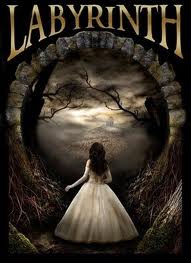 |
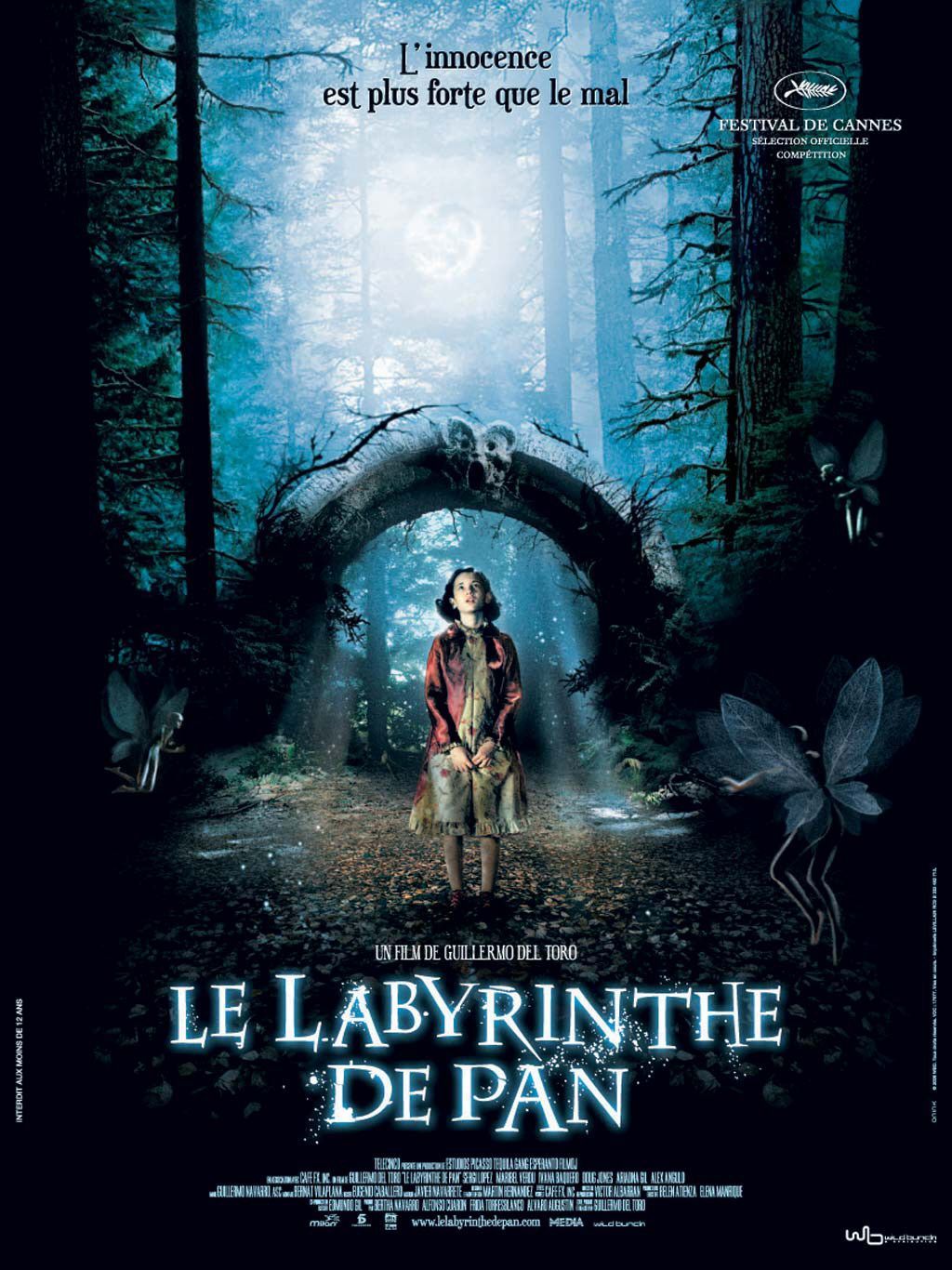 |
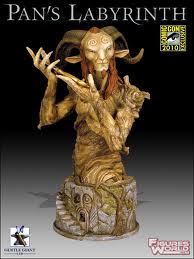 |
PETER PAN for BIG KIDS (Grown Ups)
STEVEN SPIELBERG’S HOOK
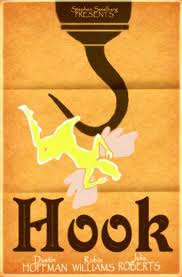 Steven Spielberg (spiel means spell, burg is German for ‘rock’ or mountain) directed the movie Hook starring Robin Williams as an older, “grown-up” Peter Pan. I find the image (a sphere with Tinker Bell’s golden light as a lure on Captain Hook’s hook) of this movie poster for Hook suggestive of the Dreamworks Pictures opening sequence of the boy fishing on the moon with his ‘hook’ down on the waters on Earth.
Steven Spielberg (spiel means spell, burg is German for ‘rock’ or mountain) directed the movie Hook starring Robin Williams as an older, “grown-up” Peter Pan. I find the image (a sphere with Tinker Bell’s golden light as a lure on Captain Hook’s hook) of this movie poster for Hook suggestive of the Dreamworks Pictures opening sequence of the boy fishing on the moon with his ‘hook’ down on the waters on Earth.
When Captain Hook kidnaps his children, an adult Peter Pan must return to Neverland and reclaim his youthful spirit in order to challenge his old enemy. One of the more memorable quotes from the movie is Peter Pan declaring, “To die will be an awfully big adventure.” There is a scene where Tinkerbell who is lit up like a “firefly from hell”, as Peter calls her, is pulling him toward her and he says he has died, is out of his body and is going to the light, a direct reference to the Light mentioned in near-death experiences. Later Peter tells his army of soldiers called The Lost Boys, “Let’s get ready to show them the white light we’re made of, boys.” He also has to “climb up a drainpipe” because he “ran out of fairy dust”.
TRICKED BY THE LIGHT: TRICKSTERS & THE TRICKSTER GOD
I suggest you visit this webpage. It has much more information on Pan as well as other personifications of the Devil/Satan/The Trickster/Original Joker/Liar/Masquerader.
http://www.trickedbythelight.com/tbtl/TricksterGod.shtml
 Leave it to Hollywood to turn a sick Pedophile into a Hero!
Leave it to Hollywood to turn a sick Pedophile into a Hero!
The Official Narrative:
“The Academy Award-winning film, FINDING NEVERLAND, follows the relationship between playwright J. M. Barrie and the family that inspired Peter Pan, or The Boy Who Wouldn’t Grow Up – one of the most beloved stories of all time.
Following the dismal reception of his latest play, Little Mary, J.M. Barrie meets widowed Sylvia and her four young sons in Kensington Gardens. He proves to be a great playmate and surrogate father figure for the boys, and their imaginative antics inspire him to write a play about boys who do not want to grow up. Barrie’s producer skeptically agrees to mount Peter Pan despite his belief it holds no appeal for upper-class theatergoers. Barrie places children from a nearby orphanage in the audience for the opening night show and the adults present react to their infectious delight with an appreciation of their own. The play proves to be a huge success.”
We know how Hollywood takes license with their scripts. Compare this story with the true account of the Author J.M. Barrie’s relationship with the boy and his family. See the link in Part 1.
PAN – THE GOAT HOOVED GOD
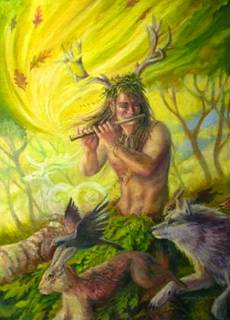 The ancient deity God/Wildman Pan is one of the most recognized deities in Greek Mythology. Pan is an ancient God indeed, harkening back to the days of Nimrod the Mighty Hunter and the hunter/gatherer societies with their horned or antlered shamanic Gods. Worship of Pan originated in the region of Greece known as Arcadia. To the ancient Greeks Arcadia was a magical, ancient place. They referred to it as the land “that existed before the moon,” and thought of it as the home of the first Greeks. Arcadia was a land of shepherds, peasants, and acorn gatherers. Pan was worshipped on Mount Maenalus and Mount Lycaeus which were sacred to him. He wandered the woodlands and glades with the dancing nymphs. He is a long haired and shaggy deity whose haunts are the mountain peaks and rocky caves. A keen-eye hunter as well as a good shepherd, Pan would play his pipes in the evening, vying with the bird songs and would be joined by the sweet-voiced Nymphs, almost every evening. Their music would echo around the mountain tops. He became the herdsman’s God associated with goats which were the principal livestock of that part of Greece. The Gods On Mount Olympus were enraged by the implications of Pan’s name. Pan a word-forming element meaning “all, every, whole, all-inclusive,” from Greek pan-, combining form of pas (neuter pan, masculine and neuter genitive pantos) “all,” from PIE *pant- “all” (with derivatives found only in Greek and Tocharian).
The ancient deity God/Wildman Pan is one of the most recognized deities in Greek Mythology. Pan is an ancient God indeed, harkening back to the days of Nimrod the Mighty Hunter and the hunter/gatherer societies with their horned or antlered shamanic Gods. Worship of Pan originated in the region of Greece known as Arcadia. To the ancient Greeks Arcadia was a magical, ancient place. They referred to it as the land “that existed before the moon,” and thought of it as the home of the first Greeks. Arcadia was a land of shepherds, peasants, and acorn gatherers. Pan was worshipped on Mount Maenalus and Mount Lycaeus which were sacred to him. He wandered the woodlands and glades with the dancing nymphs. He is a long haired and shaggy deity whose haunts are the mountain peaks and rocky caves. A keen-eye hunter as well as a good shepherd, Pan would play his pipes in the evening, vying with the bird songs and would be joined by the sweet-voiced Nymphs, almost every evening. Their music would echo around the mountain tops. He became the herdsman’s God associated with goats which were the principal livestock of that part of Greece. The Gods On Mount Olympus were enraged by the implications of Pan’s name. Pan a word-forming element meaning “all, every, whole, all-inclusive,” from Greek pan-, combining form of pas (neuter pan, masculine and neuter genitive pantos) “all,” from PIE *pant- “all” (with derivatives found only in Greek and Tocharian).
It’s impossible to separate Pan and sex, or sex and Pan. Pan was associated with sex from the very beginning. He was generally depicted with an erection. He was a sexual god, but the sex he promoted was what became known as “panic sex”. This was sex for the sake of lust and physical satisfaction. Pan was not the god of love. Pan was the god of lust, or of sex in its grunting, groaning, moaning, dirtiest form. Pan was anti-monogamy, and his myth is full of conquests and dalliances, but void of long-time girlfriends and partners.
He was said to bring not only lust to people, but uncontrollable longing, and animal-like desire. Pan frequently raped the object of his affection and is said to have invented masturbation.
Pan played syrinx, or pan flute, the music of which was known to make people dance and lower their inhibitions. It was said that when Pan played his syrinx he could drive people mad with its music. The sound of the syrinx filled people with the lustful nature of Pan, and as a result, they often lost control.
He was often referred to as “The god heard, but not seen.” More people claimed to hear Pan’s pipes than to have actually seen him, and some of the myths even suggest that his piping was so powerful and persuasive that it sounded like speech.
Pan unleashed panic upon individuals he was upset with. As a god generally opposed to civilization and order, Pan enjoyed unleashing panic upon armies that entered his domain. It was said that any army that entered the woods and hills of Arcadia, Pan’s domain, would be inflicted with a sudden panic. In wartime Pan was known to throw armies that attempted to invade Greece into a blind panic. It was also said he helped the Athenians defeated the Persians at the Battle of Marathon in exchange for their worship of him.
As God of the dance Pan would unleash panic upon a crowd when he led them into dancing, causing the dance to become very chaotic. Pan was sometimes called “The Leaper,” because of his way of dancing and how he leaped into his more animal instincts.
Ecstatic dancing within a large group was seen as a way to commune with the god, to be touched by him for a moment or two. Shifts in consciousness are usually seen as ways to experience the divine, and a group in the middle of a highly charged panic situation is definitely shifting consciousness.
At the bare minimum devotions to Pan were done by a couple, but more often, by large groups of people, and consisted of various sex acts/orgies. Rites generally began in the mid-afternoon, after Pan’s daily nap, and lasted until sunrise the next day.
Revelers approached Pan’s worship centers with little of the reverence we might expect, instead, they approached with pan-pipes blaring, drums beating, hands clapping, and throats singing. It was considered a good idea to approach Pan with a great deal of noise, as to not startle the god. After everyone entered the cave an opening sacrifice was usually made. Most often the “sacrifice’ was more of an offering, consisting of wine for Pan, and honey-cakes for his nymphs. If an actual sacrifice was going to be performed it was almost always a male goat with his sexual organs intact. After the sacrifice, the goat meat was generally boiled and eaten by the participants, with whatever was left going to the god in the form of a burnt offering.
Post-offering Pan Rituals degenerated into insult contents between the male and female participants. These insults were generally coarse, and sexually provocative. The titillation between the sexes probably upped the amount of energy in the room and created a pretty charged atmosphere. Teasing and taunting were often used in Pan Worship to honor him, as Pan was known as a Trickster and a Joker.
After the stand-up comedy portion of the ritual, there were sometimes vigils held to await the appearance of the god. Since Pan Rituals were almost always gender inclusive, sometimes the men would wait for Pan while the women went off drinking, and sometimes the women would wait while the men drank. Women continually held a place of honor in the cult of Pan, and both sexes had equal access to him. The vigil came to an end when someone found a genuine sign that Pan had arrived at the ritual. It might come in the form of a vision, or something a bit more tangible. When it was established that he was at the rite, the sexes joined together again for the remainder of the ritual.
I use the term “rite” but what happened after the vigil was more like a party than a ritual. People danced, they drank, and sometimes they participated in group sex. Just about anything was allowed in the grottoes, and people took advantage of the situation. While all of the drinking, boogieing, and copulating were going on, the panpipes would continue to play. The pipes were a constant presence throughout the ritual, and were played continuously.
As the ritual reached its climax many of the women there would begin to make a sound called a “krauge.” The krauge was a loud, frightening noise, the kind of sound that could truly inspire a panic-type situation. The sound of the krauge mixed with the drunkenness and sexual energy created a ritual environment flush with energy. During these rites, people were often visited with visions of the god, and there were times when he was said to descend into the body of one of his followers.
The ritual usually ended sometime around sunrise, but never before then. It was considered an insult to the god to not make it through the night. I’m sure people monitored their drinking to make sure they didn’t offend great Pan by passing out shortly before midnight. It was a little easier to drink until dawn three thousand years ago since most Greek wine was mixed with water.
Arcadia was void of large cities, so citywide celebrations honoring Pan are rare, but they existed in limited form. In Athens, a run in honor of Pan was conducted every January. All the unmarried boys ran in it, in the hope that Pan would help them find a mate. How this helped anyone find a girlfriend is anyone’s guess, but it allegedly did. Pan shared his run with the gods Hephaestus and Prometheus. Lots of images of Pan existed in the big Greek cities, just not a lot of rites. City-dwellers also contributed to his grottoes, even though most of them were several miles from any major population centers.
Pan was said to sometimes possess his worshipers and those who neglected him. The term “panolepsy” refers to possession of a human being by the god Pan, and it was generally seen as a negative thing. Most people who ended up possessed by Pan withdrew from society and became social misfits. On rare occasions the possessed one might find themselves stuck in a fit of hysterical laughter, this was generally seen as a sign of favor from Pan.
Excerpts taken from: Pan: The God of All, February 19, 2013, by Jason Mankey
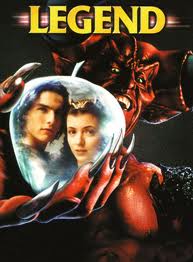 Several years before, David Bowie played the trickster goblin king, Jareth, in the movie Jim Henson’s Labyrinth, for which he wrote the soundtrack. Tom Cruise starred in Legend which featured an even more devilish villain.
Several years before, David Bowie played the trickster goblin king, Jareth, in the movie Jim Henson’s Labyrinth, for which he wrote the soundtrack. Tom Cruise starred in Legend which featured an even more devilish villain.
Hopefully, you have seen enough to understand that Pan is a very real demonic force that has been active through all of the ages. He is the personification of all that is evil. His faithful followers work hard to keep his image alive in every generation and every society. Don’t buy into the lie. Don’t allow yourself to believe, for one minute, that this is all just innocent fun. Protect your children from the influence of these images, tunes, videos, video games and literature. For Heaven’s sake DO NOT TAKE THEM TO THE “PETER PAN 360″ performances!!
UPDATE: Added 2/27/2019

Photo Credit: DON’T FLY TO NEVERLAND
 Babylon Now: Episode 3: Angel of Death Peter Pan and The Shadow of Doom w/ Gary Wayne – YouTube
Babylon Now: Episode 3: Angel of Death Peter Pan and The Shadow of Doom w/ Gary Wayne – YouTube
The Video was Censored but you can hear the entire show on SOUNDCLOUD By Clicking the LInk Below:
![]() TO Listen to this Podcast: CLICK HERE
TO Listen to this Podcast: CLICK HERE
